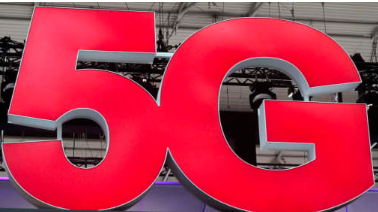5G Baseband Dialed in at 3GPP
The 3GPP announced with a tweet from a meeting in Portugal it finished the first standard for a 5G cellular radio. The effort was on an accelerated path to define a spec before the end of the year for baseband chips that are now on their own accelerated path to market before July.
The milestone concludes a process that attracted as many as 800 engineers submitting up to 3,000 proposals per meeting.
“Given operator interest, we’ve been doing everything we can to improve the time from spec freeze to commercialization, it is a race to launch 5G devices…so as decisions were made in meetings, we shared them with the ASIC team implementing hardware — it’s all pipelined to incorporate the final changes,” said John Smee, a vice president of engineering for corporate R&D at Qualcomm.
Details of the Release 15 physical-layer standard were essentially complete after final work group meetings that concluded Dec. 1. That enabled Qualcomm and Ericsson to announce today they already have tested the final spec in their labs running on handsets and base stations using FPGAs.
“After Release 14, we had an idea what we were shooting for in terms of a general architecture, but the specifics of slot structures, signaling, channel coding, pilot structures and so on were gelling through 2017,” said Smee.
The current 3GPP spec enables 5G connections over today’s LTE core networks that carriers are expected to offer as commercial services in 2019. The 3GPP aims to deliver next fall a spec for 5G core networks enabling so-called standalone 5G links.
“A few thousand nodes of the [LTE-based standard] will be deployed in the U.S. by the end of next year for fixed-wireless access with Ericsson and Nokia in the driver’s seat,” for last-mile access services planned by Verizon and others, said Stephane Teral, an analyst at IHS Markit.
The standalone version will enable broadband mobile services expected for “commercial launch in Korea in 2019 as well as a massive trial in China — then we’ll get Samsung, Huawei and ZTE on board to shake up the market,” Teral said.
Another market researcher forecasts a 5G build out won’t return the base station market to growth until 2021 given the decline in LTE build outs.
In separate announcements over the past year, Intel and Qualcomm discussed their plans for their competing 5G baseband chips for smartphones. Base station OEMs typically design their own ASICs as part of their secret sauce.
Qualcomm ships about half of the client-side LTE basebands today, followed by Samsung and Mediatek. Intel has been leaping up from far behind in the rankings thanks to its design wins in the latest Apple iPhones, said market watchers at Strategy Analytics.
The 5G baseband race will be measured in the quality of the implementations as well as their time to the finish line. Vendors will differentiate their chips, in part, by the numbers of global frequency bands and receive/transmit antennas they support as well as their latency, throughput and energy efficiency — especially in their power amplifiers, said Qualcomm’s Smee.
Looking ahead, Release 16 is expected to enable next-generation modems supporting shared licensed/unlicensed spectrum, ultra-low latency links and a capability for base stations to talk with each other to coordinate their efforts, he said.
In U.S and Sweden labs earlier this month, Qualcomm and Ericsson tested the Release 15 spec over 3.5 and 28 GHz bands. Nine carriers provided input on or observed the tests including AT&T, NTT Docomo, Orange, SK Telecom, Verizon and Vodafone.
The effort followed a test late last month at a China Mobile lab using a prototype base station from China’s ZTE. Qualcomm has announced plans to test its prototype baseband with Nokia’s base stations.
“Over the next few months, we will add functions and get ready for over-the-air trials with operators, taking the technology from the lab to the field,” said Smee.
在线留言询价

5G Needs New Approach to Security

Partnership to Develop 5G Base Station Chip

5G: Huawei India CEO says open to provide source code for screening to allay security concerns

US has a 'concerted strategy' to push allies to reject Huawei's 5G equipment: Eurasia Group
- 一周热料
- 紧缺物料秒杀
| 型号 | 品牌 | 询价 |
|---|---|---|
| BD71847AMWV-E2 | ROHM Semiconductor | |
| CDZVT2R20B | ROHM Semiconductor | |
| RB751G-40T2R | ROHM Semiconductor | |
| TL431ACLPR | Texas Instruments | |
| MC33074DR2G | onsemi |
| 型号 | 品牌 | 抢购 |
|---|---|---|
| TPS63050YFFR | Texas Instruments | |
| IPZ40N04S5L4R8ATMA1 | Infineon Technologies | |
| BU33JA2MNVX-CTL | ROHM Semiconductor | |
| STM32F429IGT6 | STMicroelectronics | |
| ESR03EZPJ151 | ROHM Semiconductor | |
| BP3621 | ROHM Semiconductor |
AMEYA360公众号二维码
识别二维码,即可关注
























